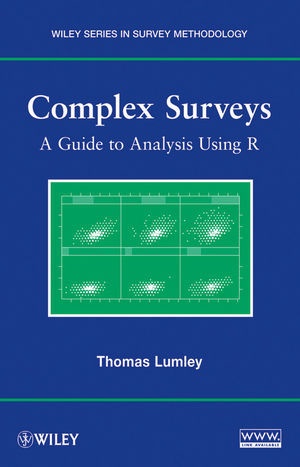Ulteriori informazioni
Informationen zum Autor THOMAS LUMLEY, PHD, is Associate Professor of Biostatistics at the University of Washington. He has published numerous journal articles in his areas of research interest, which include regression modeling, clinical trials, statistical computing, and survey research. Dr. Lumley created the survey package that currently accompanies the R software package, and he is also coauthor of Biostatistics: A Methodology for the Health Sciences, Second Edition, published by Wiley. Klappentext Survey analysis remains the bread-and-butter of sociological research. Highlighting three main areas of interest-calibration estimators, two-phase designs, and fitting of regression models to survey data-Complex Surveys is the first book to describe the use of R in survey analysis in order to meticulously demonstrate new and efficient analyses of survey research methods in the health and social sciences. Written for applied statisticians and sophisticated users of statistics in the health and social sciences, the text employs large data sets throughout to illustrate the need for, and utility of, the R software system. Zusammenfassung * Incorporates the use of R subroutines in the analysis ofsurveys * Realistically large, but not technologically inaccessible, datasets are showcased to illustrate the need for and utility of the Rsoftware system. Inhaltsverzeichnis Acknowledgments. Preface. Acronyms. 1 Basic Tools. 1.1 Goals of Inference. 1.1.1 Population or Process? 1.1.2 Probability Samples. 1.1.3 Sampling Weights. 1.1.4 Design Effects. 1.2 An Introduction to the Data. 1.2.1 Real Surveys. 1.2.2 Populations. 1.3 Obtaining the Software. 1.3.1 Obtaining R. 1.3.2 Obtaining the Survey Package. 1.4 Using R. 1.4.1 Reading Plain Text Data. 1.4.2 Reading Data from Other Packages. 1.4.3 Simple Computation. Exercises. 2 Simple and Stratified Sampling. 2.1 Analyzing Simple Random Samples. 2.1.1 Confidence Intervals. 2.1.2 Describing the Sample to R. 2.2 Stratified Sampling. 2.3 Replicate Weights. 2.3.1 Specifying Replicate Weights to R. 2.3.2 Creating Replicate Weights in R. 2.4 Other Population Summaries. 2.4.1 Quantiles. 2.4.2 Contingency Tables. 2.5 Estimates in Subpopulations. 2.6 Design of Stratified Samples. Exercises. 3 Cluster Sampling. 3.1 Introduction. 3.1.1 Why Clusters: The NHANES II Design. 3.1.2 Single-Stage and Multistage Designs. 3.2 Describing Multistage Designs to R. 3.2.1 Strata with Only One PSU. 3.2.2 How Good is the Single-State Approximation? 3.2.3 Replicate Weights for Multistage Samples. 3.3 Sampling by Size. 3.3.1 Loss of Information from Sampling Clusters. 3.4 Repeated Measurements. Exercises. 4 Graphics. 4.1 Why is Survey Data Different? 4.2 Plotting a Table. 4.3 One Continuous Variable. 4.3.1 Graphs Based on the Distribution Function. 4.3.2 Graphs Based on the Density. 4.4 Two Continuous Variables. 4.4.1 Scatterplots. 4.4.2 Aggregation and Smoothing. 4.4.3 Scatterplot Smoothers. 4.5 Conditioning Plots. 4.6 Maps. 4.6.1 Design and Estimation Issues. 4.6.2 Drawing Maps in R. Exercises. 5 Ratios and Linear Regression. 5.1 Ratio Estimation. 5.1.1 Estimating Ratios. 5.1.2 Ratios for Subpopulation Estimates. 5.1.3 Ratio Estimators of Totals. 5.2 Linear Regression. 5.2.1 The Least-Squares Slope as an Estimated Population. 5.2.2 Regression Estimation of Population Totals. 5.2.3 Confounding and Other Criteria for Model Choice. 5.2.4 Linear Models in the Su...

